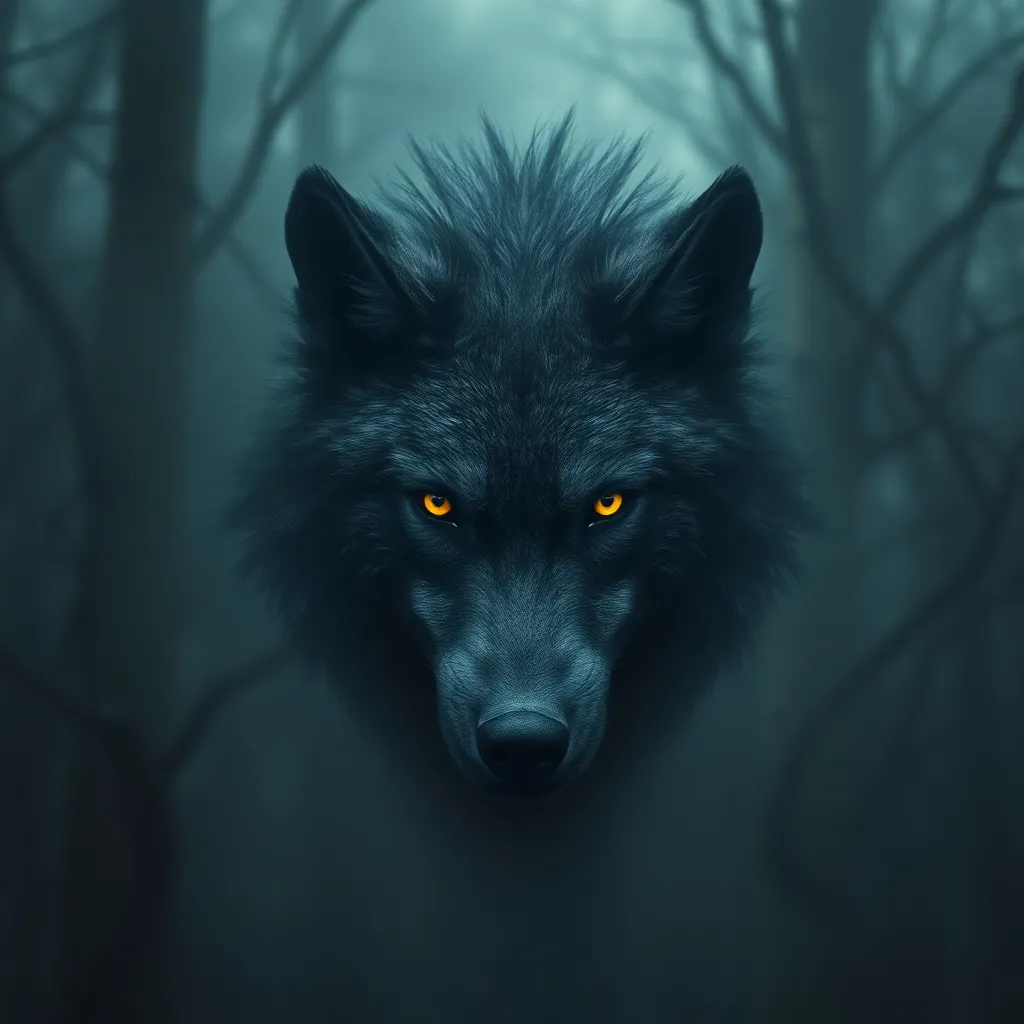The Wolf Within: A Deep Dive into the Psychology of the Werewolf Legend
I. Introduction
The werewolf legend is one that transcends cultures and generations, appearing in myths and stories from ancient civilizations to modern media. These tales of humans transforming into wolves, often under the light of a full moon, evoke a sense of fear, fascination, and intrigue. Each culture has its own nuances of the werewolf myth, yet they all share a common theme: the battle between humanity and primal instincts.
This article aims to explore the psychological implications of the werewolf archetype, delving into how these stories reflect our deepest fears, desires, and the duality of our nature. By understanding the werewolf legend, we can gain insights into the human psyche and the complexities of identity.
II. Historical Context of the Werewolf Legend
A. Origins of werewolf myths in ancient civilizations
Werewolf myths can be traced back to ancient civilizations, with reports of lycanthropy appearing in various cultures. The Sumerians, for instance, had tales of wolf-like beings, while the Greeks spoke of the legend of Lycaon, a king who was transformed into a wolf by Zeus as punishment for his impiety. These early narratives illustrate humanity’s fascination with transformation and the animalistic side of human nature.
B. Evolution of the werewolf narrative through folklore and literature
As time progressed, the werewolf myth evolved, absorbing different cultural elements. In medieval Europe, werewolves were often associated with witchcraft and the devil, leading to widespread fear and persecution. Literature from this period, such as the works of the Brothers Grimm, contributed to the dark and mysterious nature of the werewolf, embedding it further into folklore.
C. The connection between werewolves and societal fears
Throughout history, werewolves have been intertwined with societal fears—fear of the unknown, fear of the ‘other,’ and fear of losing control over one’s identity. This connection highlights how the werewolf serves as a reflection of societal anxieties and the struggles faced by individuals within their communities.
III. The Psychology of Transformation
A. Symbolism of transformation in werewolf tales
The transformation of a human into a werewolf symbolizes the struggle between civilization and primal instincts. This metamorphosis often reflects the inner turmoil faced by individuals as they navigate societal expectations versus personal desires.
B. The duality of human nature: the beast within
Psychologically, the werewolf embodies the duality of human nature. On one hand, there is the civilized persona, adhering to societal norms, while on the other, there lies the wild, untamed self. This duality raises questions about identity and the extent to which we suppress our primal instincts in favor of social acceptance.
C. Psychological theories on identity and the self
Various psychological theories, including Carl Jung’s concept of the shadow, suggest that the werewolf can represent the repressed aspects of our identity. The shadow encompasses the traits and desires we deny in ourselves, manifesting in the werewolf’s transformation. Acknowledging this ‘wolf within’ can lead to a more integrated self.
IV. The Werewolf as a Metaphor for Repression
A. Exploration of societal norms and repression
Werewolves often symbolize the consequences of societal repression. The transformation into a beast can be seen as a reaction to the constraints imposed by society, where individuals may feel compelled to hide their true selves.
B. The werewolf as a representation of suppressed instincts and desires
As a metaphor for suppressed instincts and desires, the werewolf highlights the conflict between personal fulfillment and societal expectations. This theme resonates with many individuals who struggle to balance their true selves with the roles they are expected to play.
C. Case studies: Literature and films that illustrate this theme
- The Wolf Man (1941): A classic film that explores themes of identity and the struggle between human and beast.
- The Company of Wolves (1984): A retelling of Little Red Riding Hood that delves into the themes of sexuality and repression.
- American Werewolf in London (1981): A blend of horror and comedy that addresses the consequences of transformation and the loss of control.
V. Fear and the Unknown: The Role of the Werewolf in Human Psychology
A. Examining the fear of the ‘other’ and the monstrous
The werewolf often embodies the fear of the ‘other’—the monstrous, the unfamiliar, and the uncontrollable. This fear can stem from societal conditioning, leading to a stigmatization of those who do not conform.
B. The psychological impact of horror and monstrosity
Horror stories featuring werewolves invoke visceral reactions, prompting audiences to confront their own fears of monstrosity and transformation. The psychological impact of these narratives can serve as a catalyst for reflection on one’s fears and societal taboos.
C. The werewolf as a reflection of inner fears and anxieties
Ultimately, the werewolf can be seen as a manifestation of inner fears and anxieties, representing the parts of ourselves that we may wish to hide. Understanding this connection can provide valuable insights into our psychological struggles.
VI. Modern Interpretations and Cultural Relevance
A. The resurgence of werewolf themes in contemporary media
In recent years, werewolf themes have experienced a resurgence in contemporary media, from TV series like “Teen Wolf” to films like “The Wolfman” (2010). These modern interpretations often blend traditional folklore with contemporary issues such as identity, belonging, and mental health.
B. How modern society interprets the werewolf legend
Modern society often interprets the werewolf legend through a lens of empowerment and self-acceptance. The werewolf becomes a symbol of embracing one’s true nature rather than repressing it, reflecting changing attitudes towards identity and mental health.
C. The role of werewolves in discussions about mental health and trauma
Werewolves can also play a role in discussions about mental health and trauma, serving as metaphors for the struggle against one’s darker impulses and the importance of confronting and integrating these aspects for healing.
VII. The Therapeutic Lens: Werewolves and the Human Psyche
A. The potential for werewolf narratives in therapy and self-exploration
Werewolf narratives can be valuable in therapeutic settings, offering a framework for individuals to explore their inner conflicts and emotions. By confronting their ‘wolf within,’ clients can gain insights into their repressed desires and fears.
B. Analyzing the therapeutic benefits of confronting one’s inner ‘wolf’
Confronting one’s inner ‘wolf’ can lead to significant therapeutic benefits, including increased self-awareness, self-acceptance, and a deeper understanding of one’s motivations and behaviors. This process can empower individuals to embrace all aspects of themselves.
C. Case examples of werewolves in psychological literature
- The Werewolf by Angela Carter: A short story that explores themes of femininity and liberation through the werewolf metaphor.
- Lycanthropy as a Metaphor for Mental Illness: Academic papers discussing the relationship between lycanthropy and psychological conditions.
VIII. Conclusion
In summary, the psychology of the werewolf legend reveals profound insights into human behavior, identity, and the duality of our nature. The werewolf serves as a powerful metaphor for the struggles we face between societal norms and personal desires, as well as our fears of the unknown. By embracing the ‘wolf within,’ we can embark on a journey towards self-acceptance and understanding, ultimately leading to a more integrated and fulfilling life.
The enduring nature of the werewolf myth offers an opportunity for introspection and exploration of the complexities of human nature, reminding us that within each of us lies a wild and untamed spirit waiting to be acknowledged.



